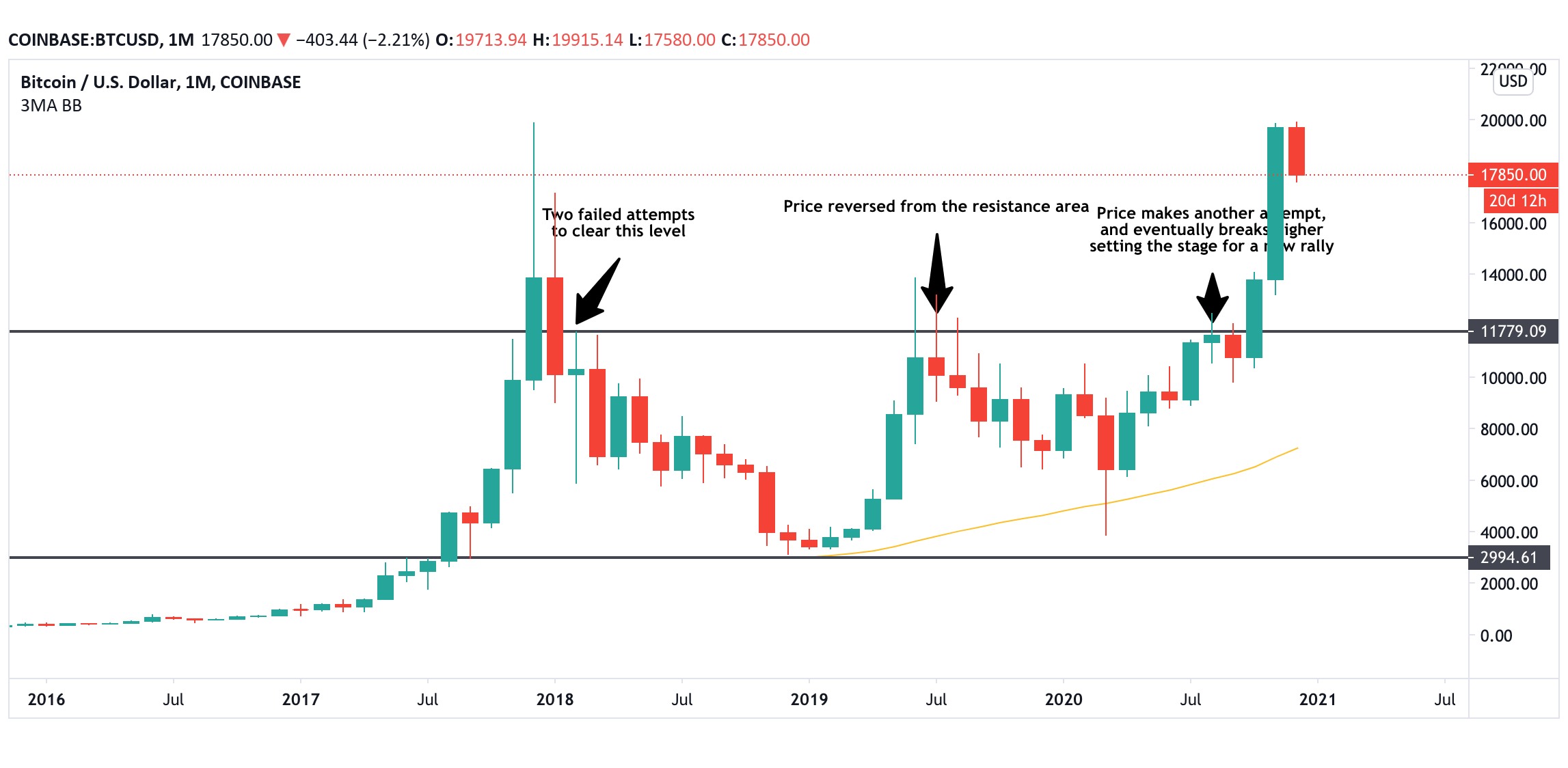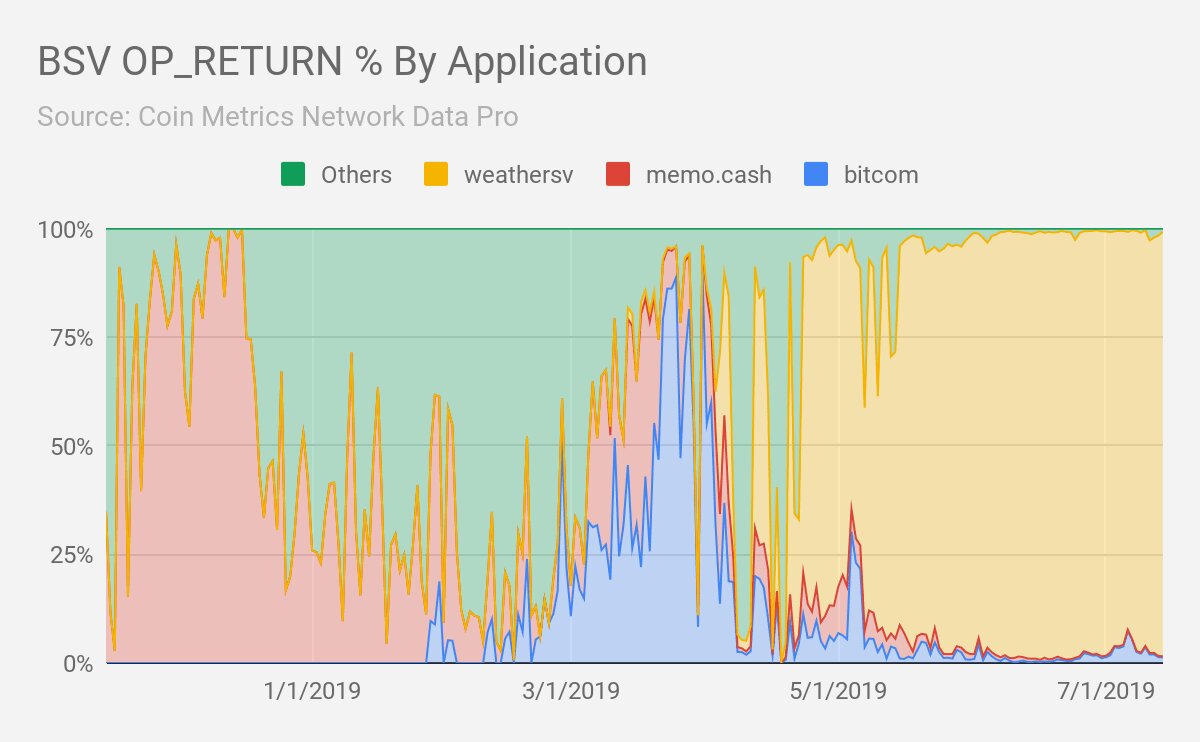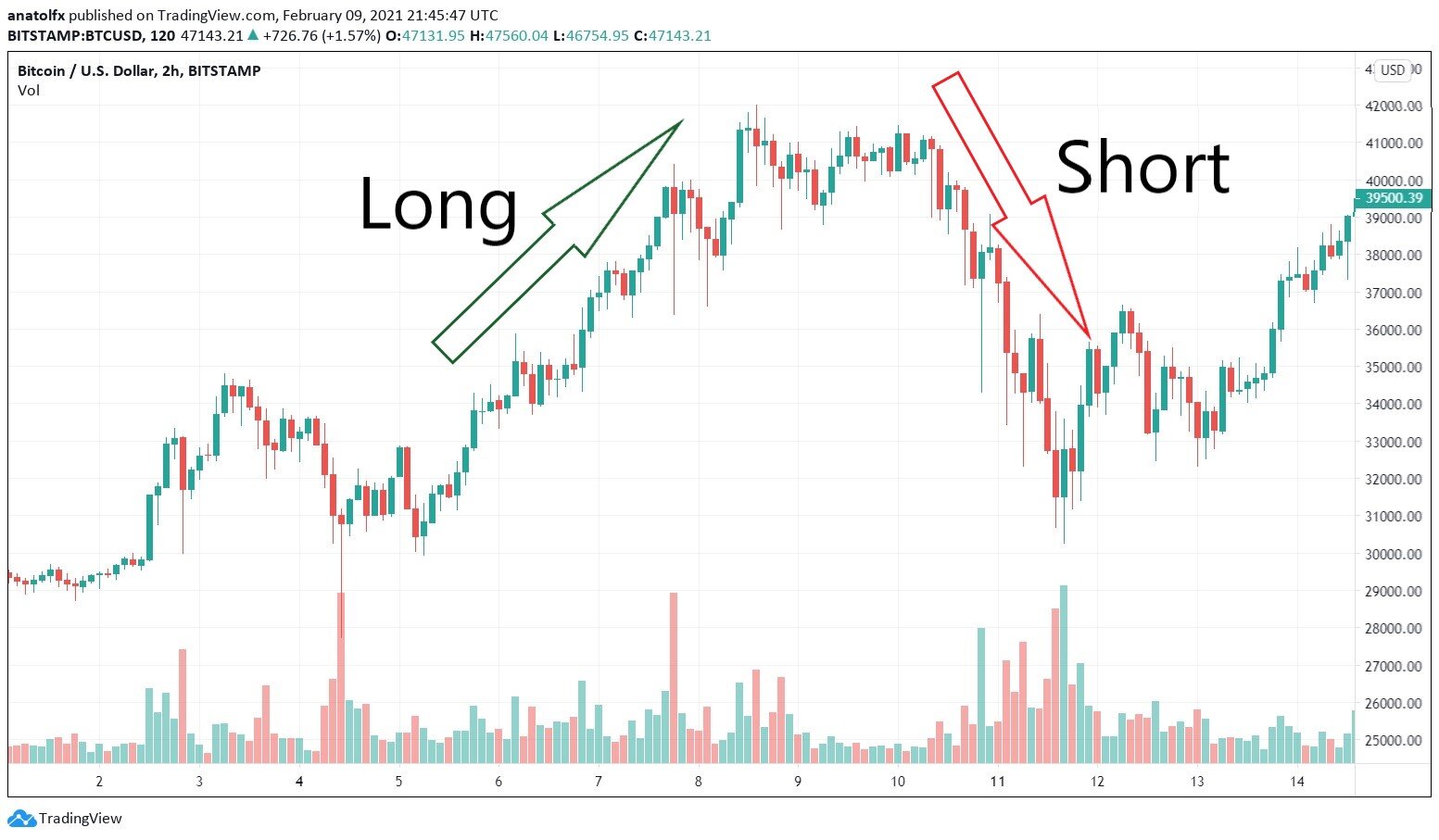Introduction
Welcome to the exciting world of swing trading in the cryptocurrency market! If you’re interested in leveraging the volatility and potential profitability of cryptocurrencies, then swing trading is a strategy worth exploring.
Swing trading is a popular approach for traders to capitalize on short-term price fluctuations in any financial market, including cryptocurrencies. Unlike day trading, which involves making multiple trades within a single day, swing trading focuses on capturing larger price movements over a few days to a few weeks.
With the incredible growth and popularity of cryptocurrencies in recent years, swing trading has become an attractive option for traders looking to profit from the market’s ups and downs. This approach allows traders to take advantage of price swings in both bullish and bearish markets, making it a versatile strategy.
One of the key advantages of swing trading in the cryptocurrency market is the potential for significant profits. Cryptocurrencies are known for their volatility, which creates ample opportunities for traders to enter and exit positions at favorable prices. By taking advantage of price swings, swing traders can capitalize on short-term market movements and potentially generate substantial returns on their investments.
Getting started with swing trading in the crypto market requires setting up a trading account with a reputable exchange that offers a wide range of cryptocurrencies. You’ll also need to equip yourself with a solid understanding of technical analysis and fundamental analysis strategies, as these will be essential in identifying potential entry and exit points for your trades.
In this comprehensive guide, we will walk you through the various aspects of swing trading in the cryptocurrency market. From setting up your trading account to developing a trading plan, managing risks, and analyzing your trades, we will cover everything you need to know to become a successful swing trader in the crypto space.
So, whether you’re a seasoned trader looking to explore new horizons or a beginner eager to dive into the world of cryptocurrencies, join us as we unveil the strategies and techniques that can help you thrive as a swing trader in the exciting world of crypto.
What is Swing Trading?
Swing trading is a trading strategy that involves taking advantage of short-term price movements in any financial market, including cryptocurrencies. Unlike day trading, which focuses on making numerous trades within a single day, swing trading seeks to capture larger price movements over a period of a few days to a few weeks.
The term “swing” refers to the back and forth movement of a price chart, where it swings from highs to lows and vice versa. Swing traders aim to profit from these price swings by entering trades at opportune moments, typically when they anticipate a reversal in the current trend.
One of the key characteristics of swing trading is its timeframe. Swing traders are not concerned with the minute-to-minute or hour-to-hour fluctuations in the market. Instead, they focus on identifying larger price movements and trends that can provide higher potential profits.
Swing trading in the cryptocurrency market is particularly appealing due to the market’s inherent volatility. Cryptocurrencies are known for their rapid price fluctuations, which can create significant opportunities for swing traders.
While swing trading requires a certain level of technical analysis and chart reading skills, it doesn’t require constant monitoring of the market. Swing traders can analyze price patterns, trend lines, indicators, and other technical factors to identify potential entry and exit points for their trades.
In addition to technical analysis, swing traders can also implement fundamental analysis strategies. This involves assessing the underlying factors that can influence the price movements of cryptocurrencies, such as news events, market trends, regulatory changes, and more.
Swing trading allows traders to take advantage of both bullish and bearish market conditions. When the cryptocurrency market is in an uptrend, swing traders can look for opportunities to enter long positions (buying) and ride the price upward. Conversely, during a downtrend, swing traders can search for shorting opportunities (selling) to profit from falling prices.
However, it’s important to note that swing trading is not a foolproof strategy. It requires diligent analysis, risk management, and discipline. Traders must be prepared to handle potential losses and understand that not every trade will be profitable.
In the following sections, we will delve into the various strategies and techniques that can help you become a successful swing trader in the cryptocurrency market. From technical analysis to fundamental analysis, risk management, and developing a trading plan, we will equip you with the knowledge and tools necessary to navigate the world of swing trading in cryptocurrencies.
Advantages of Swing Trading in Crypto
Swing trading in the cryptocurrency market offers several advantages that make it an attractive trading strategy for many traders. Let’s explore some of the key advantages:
- Profit potential: One of the primary advantages of swing trading in crypto is the potential for significant profits. Cryptocurrencies are known for their volatility, which means that prices can experience large and rapid movements in short periods. Swing traders aim to capture these price swings to generate profits. By correctly identifying and capitalizing on the right opportunities, swing traders can achieve substantial returns on their investments.
- Flexibility: Swing trading allows for flexibility in terms of time commitment. Unlike day trading, which requires constant monitoring of the market throughout the day, swing trading involves analyzing longer-term price trends and making trading decisions accordingly. This makes swing trading a feasible option for individuals with full-time jobs or other commitments.
- Opportunity to trade both bullish and bearish markets: Another advantage of swing trading in crypto is the ability to profit from both upward and downward price movements. In a bullish market, swing traders can enter long positions and ride the upward trend. In a bearish market, they can take short positions and profit from falling prices. This flexibility allows swing traders to adapt to different market conditions and potentially profit in any market direction.
- Reduced risk compared to day trading: Swing trading typically involves holding positions for a few days to a few weeks, which can help reduce the risk compared to day trading. With day trading, traders are exposed to the volatility and uncertainties of the market on a minute-to-minute basis. In contrast, swing traders have a longer time horizon and the opportunity to make informed decisions based on thorough analysis.
- Less stress: While swing trading still requires analysis and decision-making, it generally involves less stress compared to day trading. Swing traders do not have to constantly monitor the market and make split-second decisions. Instead, they can take the time to thoroughly analyze price patterns, indicators, and other factors to make well-informed trading decisions.
As with any trading strategy, swing trading also comes with its challenges and risks. It requires a solid understanding of technical and fundamental analysis, as well as disciplined risk management. However, for traders looking to take advantage of the volatility in the cryptocurrency market and potentially generate significant profits, swing trading offers numerous advantages that make it a compelling option.
In the following sections, we will delve deeper into the strategies and techniques that can help you excel as a swing trader in the crypto market. From setting up your trading account to analyzing charts, developing a trading plan, and managing risk, we will equip you with the knowledge and skills necessary for success in swing trading cryptocurrencies.
Setting Up Your Trading Account
Before you can start swing trading cryptocurrencies, you’ll need to set up a trading account with a reputable exchange. Here are the key steps to get you started:
- Research and choose a reputable exchange: There are numerous cryptocurrency exchanges available, each with its own features, fees, and security measures. It’s important to research and choose an exchange that aligns with your trading needs and offers a diverse range of cryptocurrencies. Some popular exchanges include Binance, Coinbase, Kraken, and Bitstamp.
- Create an account: Once you’ve selected an exchange, visit their website and sign up for an account. Provide the required information, such as your name, email address, and a secure password. Some exchanges may require additional identity verification, depending on their compliance requirements.
- Secure your account: Security is crucial when it comes to trading cryptocurrencies. Set up two-factor authentication (2FA) to add an extra layer of security to your account. This typically involves linking your account to a mobile app like Google Authenticator or receiving SMS codes.
- Deposit funds: After your account is set up and secured, you can deposit funds into your trading account. Most exchanges offer various methods to deposit funds, such as bank transfers, credit/debit cards, or even crypto-to-crypto transfers. Choose the method that is most convenient for you.
- Understand fees: Familiarize yourself with the fees associated with trading on the exchange. Exchanges typically charge fees for making trades, depositing or withdrawing funds, and sometimes for account maintenance. Understanding these fees will help you manage your trading costs effectively.
- Set up a cryptocurrency wallet: While not mandatory, it’s recommended to set up a cryptocurrency wallet for added security and control over your digital assets. Wallets are used to store your cryptocurrencies and can be either hardware wallets (physical devices) or software wallets (mobile or desktop applications). Research the different wallet options available and choose one that suits your needs.
Once your trading account is set up and funded, you’re ready to start swing trading cryptocurrencies. However, it’s essential to remember that trading always carries risks, and it’s recommended to start with a small amount and gradually increase your position as you gain experience and confidence.
In the next sections, we will explore various strategies and techniques you can use to analyze the cryptocurrency market, identify potential swing trading opportunities, and effectively manage your trades. Stay tuned!
Choosing the Right Cryptocurrencies to Swing Trade
When it comes to swing trading cryptocurrencies, selecting the right cryptocurrencies to trade is a critical decision. Here are some factors to consider when choosing the cryptocurrencies to swing trade:
- Market liquidity: Liquidity refers to the ease with which a cryptocurrency can be bought or sold without significantly impacting its price. It’s important to choose cryptocurrencies that have sufficient trading volume and liquidity to ensure that you can enter and exit positions at favorable prices. Higher liquidity also reduces the risk of encountering slippage, where the executed price deviates significantly from the expected price.
- Volatility: Cryptocurrencies are known for their volatility, which creates ample opportunities for swing traders. Look for cryptocurrencies with a history of significant price swings, as this will provide more potential for profitable swing trading opportunities. However, keep in mind that higher volatility also comes with increased risk.
- Market trends and news: Stay updated on the latest market trends and news related to cryptocurrencies. Certain events, such as regulatory announcements, partnerships, technological advancements, or market sentiment shifts, can greatly influence the price movements of cryptocurrencies. Consider swing trading cryptocurrencies that are experiencing favorable market trends or have upcoming news events that could impact their price.
- Research and analysis: Conduct thorough research and analysis on the cryptocurrencies you’re considering for swing trading. Review their whitepapers, understand their underlying technology, assess the team behind the project, and explore their market potential. Technical analysis, including studying price charts and indicators, can also provide insights into potential swing trading opportunities.
- Diversification: It’s essential to diversify your cryptocurrency portfolio when swing trading. Opt for a mix of cryptocurrencies from different sectors or industries to spread your risk. Diversification helps mitigate losses in case any particular cryptocurrency experiences a significant price decline.
- Risk appetite: Consider your risk tolerance when selecting cryptocurrencies for swing trading. Some cryptocurrencies, such as major coins like Bitcoin and Ethereum, may be considered less risky due to their established market presence. On the other hand, smaller or newer cryptocurrencies may carry higher risk but also offer greater potential rewards. Align your cryptocurrency selections with your risk appetite and trading strategy.
Remember, the cryptocurrency market is constantly evolving, and what may be suitable for swing trading today may not be in the future. Stay observant of market trends, monitor the performance of your chosen cryptocurrencies, and be prepared to adjust your trading strategy as needed.
In the following sections, we will delve into the technical and fundamental analysis strategies you can implement to identify potential swing trading opportunities with your chosen cryptocurrencies. Stay tuned for more insights!
Technical Analysis Strategies for Swing Trading
Technical analysis is a key component of swing trading and involves analyzing historical price data and various indicators to identify potential entry and exit points for swing trades. Here are some technical analysis strategies you can implement in your swing trading approach:
- Trend analysis: Identify the underlying trend of the cryptocurrency you’re considering for swing trading. Trends can be classified as upward (bullish), downward (bearish), or sideways (range-bound). By understanding the prevailing trend, you can align your trading strategy accordingly. Use tools such as trendlines, moving averages, and trend indicators like the Moving Average Convergence Divergence (MACD) to identify and confirm trends.
- Support and resistance levels: Support and resistance levels are price levels where the cryptocurrency has historically struggled to move below (support) or above (resistance). These levels can act as significant barriers for price movements. Swing traders often use support and resistance levels as potential entry and exit points for trades. Identify these levels using horizontal lines on price charts and combine them with other indicators or candlestick patterns for additional confirmation.
- Candlestick patterns: Candlestick patterns provide valuable insights into price action and can help identify potential trend reversals or continuations. Patterns such as bullish or bearish engulfing, doji, hammer, shooting star, and many more can alert swing traders to potential trading opportunities. Learn to recognize these patterns and understand their implications to make informed trading decisions.
- Indicators: Utilize technical indicators to supplement your analysis. There are various indicators available, such as the Relative Strength Index (RSI), Moving Average, Bollinger Bands, and Stochastic Oscillator. Indicators can provide signals of overbought or oversold conditions, trend strength, momentum, and more. Combine multiple indicators to enhance your analysis and increase the probability of accurate trade entries and exits.
- Chart patterns: Chart patterns can provide insights into potential price movements and the behavior of market participants. Patterns like triangles, head and shoulders, double tops or bottoms, and flags can indicate trend reversals or continuations. Make sure to learn and recognize these chart patterns to supplement your technical analysis.
It’s important to note that no single indicator or strategy can guarantee success in swing trading. It’s crucial to combine multiple indicators, patterns, and analysis techniques to confirm signals and reduce the chances of false entries or exits.
Additionally, always practice proper risk management, including setting stop-loss orders to limit potential losses and using appropriate position sizing strategies. Remember to continuously monitor your trades and adjust your stop-loss and profit-taking levels as the trade progresses.
In the following sections, we will explore fundamental analysis strategies that can complement your technical analysis and further enhance your swing trading approach. Stay tuned!
Fundamental Analysis Strategies for Swing Trading
While technical analysis plays a significant role in swing trading, fundamental analysis can also provide valuable insights for making informed trading decisions. Fundamental analysis involves evaluating the underlying factors that can influence the value and performance of a cryptocurrency. Here are some fundamental analysis strategies you can incorporate into your swing trading approach:
- News and events: Stay updated on the latest news and events surrounding the cryptocurrency market. News announcements, regulatory developments, partnerships, technological advancements, and market trends can have a significant impact on the price movements of cryptocurrencies. Be aware of upcoming events that may generate market volatility and potentially create swing trading opportunities.
- Project analysis: Conduct thorough research on the cryptocurrency projects you’re considering for swing trading. Evaluate the team behind the project, their experience, and their goals. Assess the project’s whitepaper, roadmap, and overall viability. Look for projects with strong fundamentals, innovative technology, and real-world use cases, as these factors can contribute to the long-term value and potential price appreciation of the cryptocurrency.
- Market sentiment: Consider the overall market sentiment towards a particular cryptocurrency or the entire market. Sentiment can be influenced by factors such as market trends, public opinion, social media sentiment, and analyst reports. Positive market sentiment can provide tailwinds for swing trading opportunities, while negative sentiment may indicate caution or potential shorting opportunities.
- Economic indicators: Keep an eye on economic indicators that can affect the cryptocurrency market. Factors such as interest rates, inflation rates, geopolitical events, and macroeconomic trends can influence investor sentiment and overall market conditions. Understanding these indicators can give you insights into potential swing trading opportunities and their potential impact on cryptocurrency prices.
- Partnerships and collaborations: Partnerships and collaborations can significantly impact the perceived value and market perception of a cryptocurrency. When analyzing a cryptocurrency for swing trading, take note of any strategic partnerships or collaborations it has established with other companies or organizations. Positive partnerships can enhance a cryptocurrency’s credibility and potentially drive price appreciation.
Combining fundamental analysis with technical analysis can provide a more holistic view of the market and help you make well-informed swing trading decisions. It’s important to note that fundamental analysis is subjective and open to interpretation, so it’s crucial to conduct thorough research and consider multiple sources before making trading decisions.
Remember to focus on the specific fundamentals that are relevant to swing trading, as the short-term nature of swing trades means that factors such as long-term project viability or adoption may have less immediate impact.
In the next sections, we will explore how to set entry and exit points for your swing trades, implement risk management techniques, and develop a comprehensive trading plan to maximize your swing trading success. Stay tuned!
Setting Entry and Exit Points
Setting entry and exit points is a crucial aspect of swing trading. The goal is to enter a trade at an optimal price and exit with a profit before the trend reverses. Here are some strategies to help you set effective entry and exit points:
- Identify key support and resistance levels: Analyze price charts to identify key support and resistance levels. Support levels are price levels where the cryptocurrency has historically struggled to move below, indicating potential buying opportunities. Resistance levels are price levels where the cryptocurrency has historically struggled to move above, signaling potential selling opportunities. Use these levels to determine optimal entry and exit points.
- Utilize technical indicators: Technical indicators can provide additional confirmation for entry and exit points. For example, the Moving Average Convergence Divergence (MACD) can signal potential trend reversals, the Relative Strength Index (RSI) can indicate overbought or oversold conditions, and Bollinger Bands can highlight potential price breakouts. Combine these indicators with other analysis techniques to refine your entry and exit decisions.
- Consider chart patterns: Chart patterns, such as triangles, double tops or bottoms, or trendline breaks, can provide insights into potential price movements and help determine entry and exit points. For example, a breakout above a resistance trendline may indicate an entry point, while a breakdown below a support trendline may signal an exit point.
- Implement trailing stop-loss orders: A trailing stop-loss order can help protect your profits by automatically adjusting the stop-loss level as the price moves in your favor. As the price rises, the stop-loss order moves up with it, ensuring that you lock in profits if the trend reverses. Trailing stop-loss orders help you secure gains while allowing for potential further upside movement.
- Consider profit targets: Determine a profit target for your swing trades based on your analysis and risk-reward ratio. A profit target is a predetermined price level at which you plan to exit the trade to secure your desired profit. This can be based on technical analysis, such as a resistance level or a Fibonacci retracement level, or fundamental analysis, such as an expected news event or a specific project milestone.
- Adapt to market conditions: Be flexible and adapt your entry and exit points based on market conditions. If the market sentiment or trend changes significantly, reassess your trade and adjust your entry or exit strategy accordingly. Market volatility and news events can impact your initial analysis, so it’s important to stay updated and responsive to changing market dynamics.
Keep in mind that setting entry and exit points requires a combination of technical analysis, fundamental analysis, and risk management. It’s crucial to conduct thorough analysis, use multiple confirmation signals, and consider the potential risks and rewards of each trade.
In the following sections, we will delve into risk management techniques, trading plans, and the importance of managing emotions and psychology in swing trading. These aspects are vital for maintaining discipline and consistency in your trading approach. Stay tuned!
Risk Management Techniques for Swing Trading Crypto
Risk management is a crucial aspect of successful swing trading in the cryptocurrency market. Implementing effective risk management techniques can help protect your capital and ensure that you can continue to participate in the market over the long term. Here are some key risk management techniques to consider:
- Set a stop-loss order: A stop-loss order is a predetermined price level at which you will exit the trade to limit potential losses. Place a stop-loss order below your entry point to protect yourself against significant downside moves. Determine the stop-loss level based on technical analysis, key support levels, or the maximum amount of risk you are willing to take on a particular trade.
- Use proper position sizing: Position sizing refers to the allocation of a specific portion of your capital to each trade. It’s important to determine the appropriate position size based on your risk tolerance and the potential risk-reward ratio of the trade. Avoid risking a significant portion of your capital on a single trade, as it can lead to substantial losses if the trade goes against you.
- Take profits at predetermined levels: Set profit targets for your swing trades based on your desired risk-reward ratio. Taking profits along the way ensures that you lock in gains and protect your capital. Consider scaling out of your position as the trade progresses, allowing you to secure profits while still having exposure to potential upside movements.
- Implement trailing stop-loss orders: As mentioned earlier, trailing stop-loss orders can be useful in managing risk and protecting profits. By automatically adjusting the stop-loss level as the price moves in your favor, trailing stop-loss orders allow you to capture potential gains while minimizing the risk of losing profits if the trend reverses.
- Diversify your portfolio: Diversification is key to managing risk in swing trading. Avoid focusing solely on one cryptocurrency or sector. Spread your risk by including a mix of different cryptocurrencies in your portfolio. This helps mitigate potential losses in case any particular cryptocurrency experiences a significant price decline, as not all cryptocurrencies move in the same direction or magnitude.
- Monitor and review your trades: Regularly review your swing trades to assess their performance and adjust your risk management strategies accordingly. Keep track of your trades, analyze the reasons for their success or failure, and learn from your experiences. Stay disciplined and make necessary adjustments to improve your risk management techniques over time.
It’s important to remember that no risk management strategy can completely eliminate the possibility of losses. The key is to manage your risk effectively by implementing proper risk management techniques and maintaining discipline in your trading approach. By doing so, you can protect your capital and increase your chances of long-term success in swing trading crypto.
In the following sections, we will explore the importance of developing a trading plan, managing emotions and psychology, and analyzing and tracking your trades for continuous improvement. These aspects are integral to becoming a successful swing trader. Stay tuned!
Developing a Trading Plan
A well-defined trading plan is essential for successful swing trading in the cryptocurrency market. It provides structure, consistency, and a set of guidelines to follow in your trading activities. Here are some key steps to help you develop an effective trading plan:
- Define your goals: Start by clearly defining your goals as a swing trader. Determine what you want to achieve in terms of profitability, risk tolerance, time commitment, and overall trading objectives. Establishing clear goals will guide your decision-making and keep you focused on your desired outcomes.
- Establish your trading timeframe: Determine the timeframe within which you will be conducting your swing trades. Will you be holding positions for a few days, a week, or multiple weeks? Clarify the duration of your trades to align with your goals and preferred trading style.
- Identify your trading strategy: Choose the specific swing trading strategy you will be employing. This can include a combination of technical analysis techniques, such as trend analysis, chart patterns, and indicators, as well as fundamental analysis strategies, such as news and event analysis. Determine which tools and indicators you will use to identify potential entry and exit points.
- Set entry and exit criteria: Establish clear entry and exit criteria based on your chosen trading strategy. Define the specific technical or fundamental factors that will trigger your entry into a trade. Determine the conditions under which you will exit a trade, including profit targets and stop-loss levels.
- Implement risk management rules: Incorporate risk management rules into your trading plan. Determine your position sizing, maximum risk per trade, and stop-loss levels. Establish guidelines for adjusting stop-loss orders as the trade progresses. By managing your risk effectively, you protect your capital and limit potential losses.
- Document your plan and follow it: Write down your trading plan and document all the components mentioned above. Having a written plan helps you stay disciplined and prevents impulsive decision-making. Stick to your plan and avoid making trades based on emotions or speculation. Regularly review and update your trading plan as needed.
- Practice proper trade journaling: Keep a trade journal to record your trades and the reasoning behind them. Document your entry and exit points, the analysis that led to your decision-making, and your overall trade performance. Regularly review your trade journal to analyze your strengths, weaknesses, and areas for improvement.
Developing a trading plan and adhering to it will provide structure and consistency in your swing trading activities. It helps you stay focused, make informed decisions, and manage risk effectively. Remember, a trading plan is not rigid – it should be adaptable to changing market conditions and reflect your evolving trading style and goals.
In the following sections, we will explore the importance of managing emotions and psychology in swing trading, as well as tracking and analyzing your trades to continually improve as a swing trader. Stay tuned!
Emotions and Psychology in Swing Trading
Emotions and psychology play a significant role in swing trading. Understanding and managing your emotions is crucial for making rational and disciplined trading decisions. Here are some key insights and strategies to help you navigate the psychological challenges of swing trading:
- Awareness of emotions: Recognize that emotions, such as fear and greed, can impact your trading decisions. Being aware of your emotions allows you to make more rational and objective choices. Avoid making impulsive decisions driven by emotional reactions.
- Develop discipline and patience: Swing trades can take several days to weeks to play out. It’s essential to develop discipline and patience, avoiding the temptation to constantly monitor or intervene in your trades. Stick to your trading plan and let your analysis guide your decisions.
- Manage risk and fear of missing out (FOMO): Establishing proper risk management techniques helps reduce the fear of losses and can prevent you from taking unnecessary risks. Additionally, be aware of the fear of missing out (FOMO) mentality, which can drive irrational trading decisions. Remember that there will always be new trading opportunities, and it’s crucial to focus on quality trades rather than giving in to impulsive FOMO-driven trades.
- Control overconfidence: While it’s important to have confidence in your analysis, be mindful of overconfidence. Overconfidence can lead to taking on excessive risks or neglecting proper risk management. Continuously analyze and evaluate your trades to avoid unnecessary risks and remain objective.
- Manage fear and regret: Fear of losses and regret from missed profit opportunities can cloud judgment. Make peace with the fact that not all trades will be winners and that missed opportunities are a part of trading. Learn from both winning and losing trades and focus on the long-term profitability of your strategy.
- Take breaks and practice self-care: Swing trading can be mentally and emotionally demanding. Take regular breaks, engage in activities outside of trading, and practice self-care to maintain a clear and focused mindset. This will help prevent burnout and improve your decision-making abilities.
- Continuous learning and improvement: Embrace a growth mindset and view trading as a journey of continuous learning and improvement. Analyze your trades, review your successes and mistakes, and seek to refine your strategies. Always be open to learning new techniques, staying updated with market trends, and adapting to changing market conditions.
By incorporating these strategies into your swing trading approach, you can develop greater emotional control, discipline, and resilience. Maintaining a balanced mindset and managing emotions will lead to more consistent and rational decision-making, leading to increased trading success over time.
In the following sections, we will explore the importance of tracking and analyzing your trades, as well as providing tips and best practices to maximize your swing trading performance. Stay tuned!
Tracking Your Trades and Analyzing Results
Tracking and analyzing your trades is a crucial aspect of improving your swing trading performance. It allows you to evaluate your strategies, identify strengths and weaknesses, and make informed adjustments. Here are some key steps to effectively track and analyze your trades:
- Maintain a trade journal: Keep a detailed record of your trades, including entry and exit points, trade duration, analysis conducted, and your thought process behind each trade. Additionally, note any emotional reactions or lessons learned from each trade. This trade journal serves as a valuable tool for self-reflection and improvement.
- Review your trades regularly: Set aside time on a regular basis to review your trade journal. Analyze your winning trades to identify what contributed to their success, such as accurate analysis or effective risk management. Similarly, review your losing trades to understand what went wrong and how you can mitigate similar mistakes in the future.
- Analyze your trading strategy: Evaluate the effectiveness of your trading strategy by analyzing its performance over time. Look at key metrics such as win rate, average profit per trade, and average loss per trade. Consider if any adjustments to your strategy are needed based on the trends and patterns identified in your trade analysis.
- Consider market conditions: Assess how your trades performed in different market conditions. Analyze their outcomes during trending markets, range-bound markets, and periods of high volatility. This analysis will help you understand how well your strategy adapts to varying market environments and identify areas where adjustments may be necessary.
- Identify patterns and tendencies: Look for patterns or tendencies in your trades. Are there specific types of trades that consistently lead to favorable outcomes? Are there common mistakes or pitfalls that you tend to encounter? Identifying these patterns and tendencies will help you capitalize on your strengths and address any weaknesses in your trading approach.
- Continuously learn and adapt: Extract lessons from your trade analysis and apply them to future trades. Seek out educational resources, participate in trading communities, and learn from experienced traders. The goal is to continuously refine your strategy and improve your decision-making process based on your trade analysis and feedback received.
- Set realistic goals and expectations: Use your trade analysis to set realistic goals and expectations for your swing trading journey. Understand that not all trades will be profitable, and losses are part of the trading process. Focus on consistency and continuous improvement rather than obsessing over short-term outcomes.
By diligently tracking and analyzing your trades, you gain valuable insights into your trading performance and can make data-driven adjustments to improve your results. Remember to maintain discipline, review your trades objectively, and remain committed to continuous learning and improvement.
In the following sections, we will provide tips and best practices for maximizing your swing trading performance, including managing position size, staying updated with market trends, and developing a robust trading routine. Stay tuned!
Tips and Best Practices for Swing Trading Crypto
Swing trading in the cryptocurrency market requires skill, discipline, and a well-thought-out approach. Here are some tips and best practices to help you maximize your swing trading performance:
- Manage position size: Avoid risking too much of your capital on a single trade. Determine an appropriate position size based on your risk tolerance and the potential risk-reward ratio of the trade. This helps protect your capital and ensures that you can continue trading even in the face of potential losses.
- Stay updated with market trends: Continuously monitor the cryptocurrency market and stay updated with the latest news, events, and market trends. Keep an eye on regulatory developments, technological advancements, and shifts in market sentiment. Being well-informed allows you to identify potential swing trading opportunities and adjust your strategies accordingly.
- Develop a robust trading routine: Establish a structured routine for your swing trading activities. Plan your trading sessions, conduct thorough analysis, and execute your trades based on your predefined criteria. Having a routine helps maintain discipline and consistency in your approach, minimizing the impact of emotional decision-making.
- Keep emotions in check: Emotions can cloud judgment and lead to impulsive trading decisions. Be aware of emotional reactions such as fear, greed, and FOMO and strive to make rational and objective decisions. Stick to your trading plan and avoid letting emotions dictate your actions.
- Utilize stop-loss orders: Implement stop-loss orders to limit your potential losses. Determine stop-loss levels based on technical analysis, key support levels, or your predefined risk management rules. This helps protect your capital and ensures that losses are contained within your acceptable risk limits.
- Practice patience and discipline: Swing trading requires patience and discipline. Avoid the urge to constantly monitor every price movement and make impulsive trading decisions. Stick to your analysis, trading plan, and risk management strategies. Let your trades play out according to your predetermined criteria.
- Learn from both winning and losing trades: Analyze both your winning and losing trades to extract valuable lessons. Identify patterns and tendencies that led to success or failure. Continuously learn and refine your strategies based on these insights to improve your trading performance over time.
- Seek guidance and education: Take advantage of educational resources, trading communities, and experienced traders. Seek guidance from those who have been successful in swing trading crypto. Learn from their experiences, gain insights, and incorporate best practices into your own trading approach.
- Develop a long-term mindset: Embrace a long-term mindset when it comes to swing trading. Accept that losses are part of the process and that not every trade will be profitable. Focus on consistency and continuous improvement rather than fixating on short-term outcomes. Develop a sustainable trading approach that can withstand market fluctuations over time.
By following these tips and best practices, you can enhance your swing trading skills and improve your chances of success in the cryptocurrency market. Remember to stay disciplined, manage risk effectively, and continuously learn and adapt to market conditions.
Incorporating these practices, along with the strategies and techniques outlined in earlier sections, will help you develop a solid foundation for becoming a successful swing trader in the exciting world of crypto.
Conclusion
Congratulations on completing this comprehensive guide to swing trading in the cryptocurrency market! We have covered various essential aspects of swing trading, from setting up your trading account to implementing technical and fundamental analysis strategies, managing risk, and developing a trading plan.
Swing trading in crypto offers tremendous potential for profit, thanks to the volatility and market dynamics of cryptocurrencies. However, it’s important to approach swing trading with discipline, patience, and a solid understanding of the strategies and techniques discussed.
Remember to conduct thorough research and analysis, identify suitable entry and exit points, manage your risk effectively, and continuously evaluate and improve your trading performance. Emotional control, adherence to your trading plan, and the ability to adapt to changing market conditions are key factors in becoming a successful swing trader.
Swing trading is a journey of continuous learning and improvement. Stay updated with market trends, seek guidance from experienced traders, and maintain a trading journal to evaluate your trades and progress over time. As you gain experience, refine your strategies and adjust your approach to align with your goals and risk tolerance.
Always keep in mind that trading involves risk, and there are no guarantees in the market. Be patient, remain disciplined, and manage your expectations. With dedication and persistence, swing trading can be a rewarding endeavor in the exciting world of cryptocurrencies.
Now, armed with the knowledge and strategies shared in this guide, it’s time to take the next step and begin your swing trading journey. Put your learnings into action, stay focused, and may your swing trading endeavors be filled with success!

























